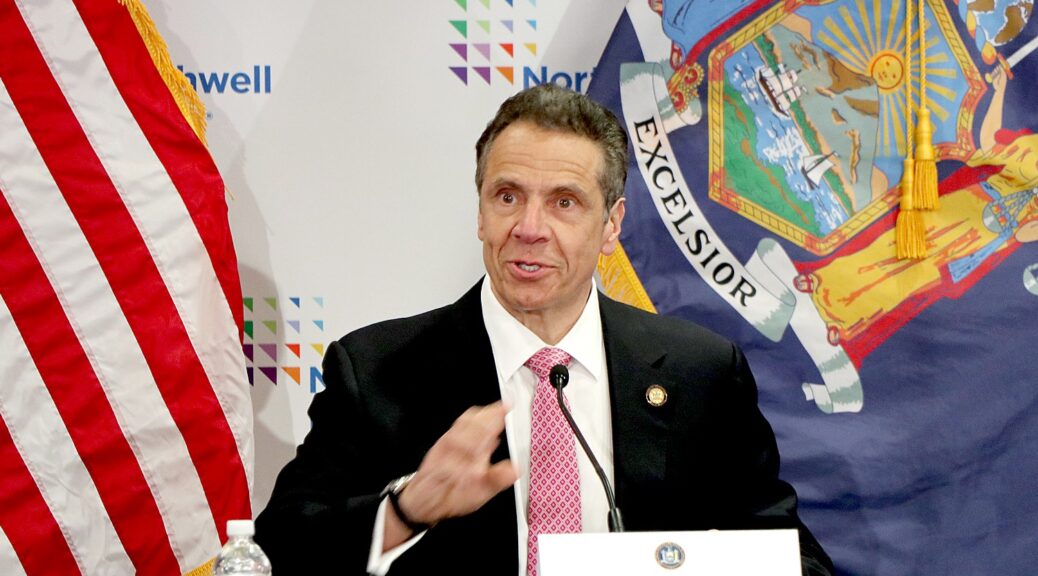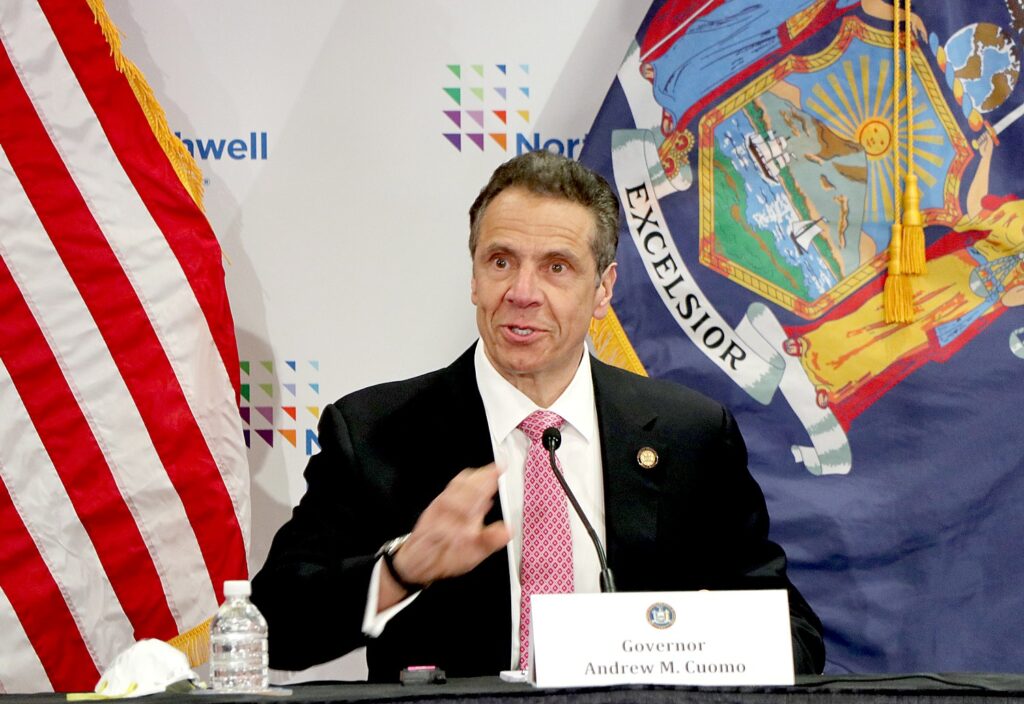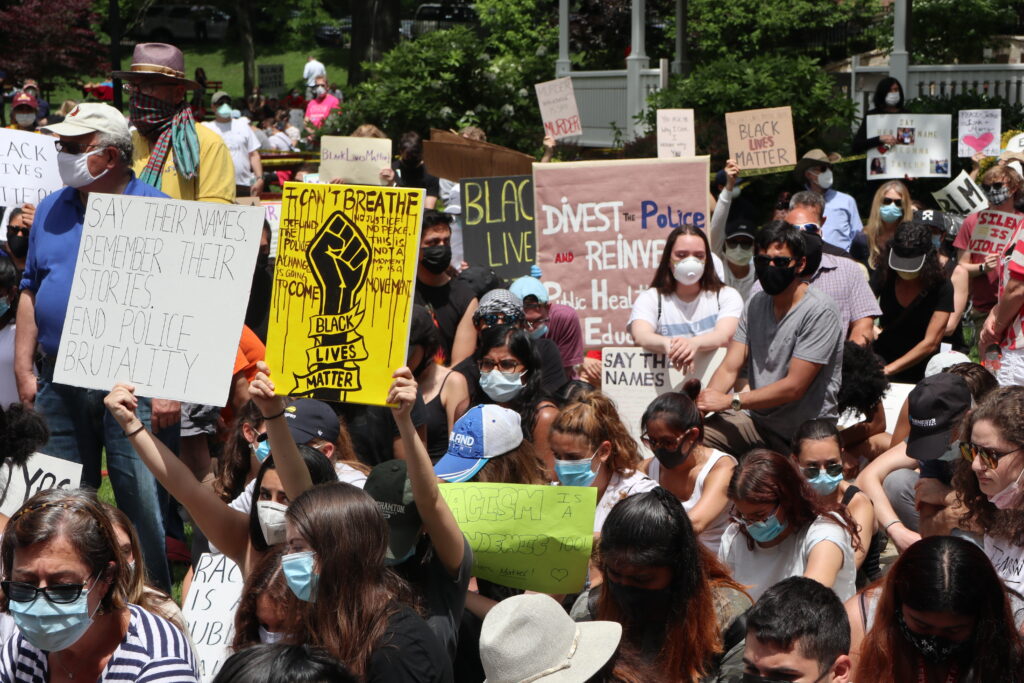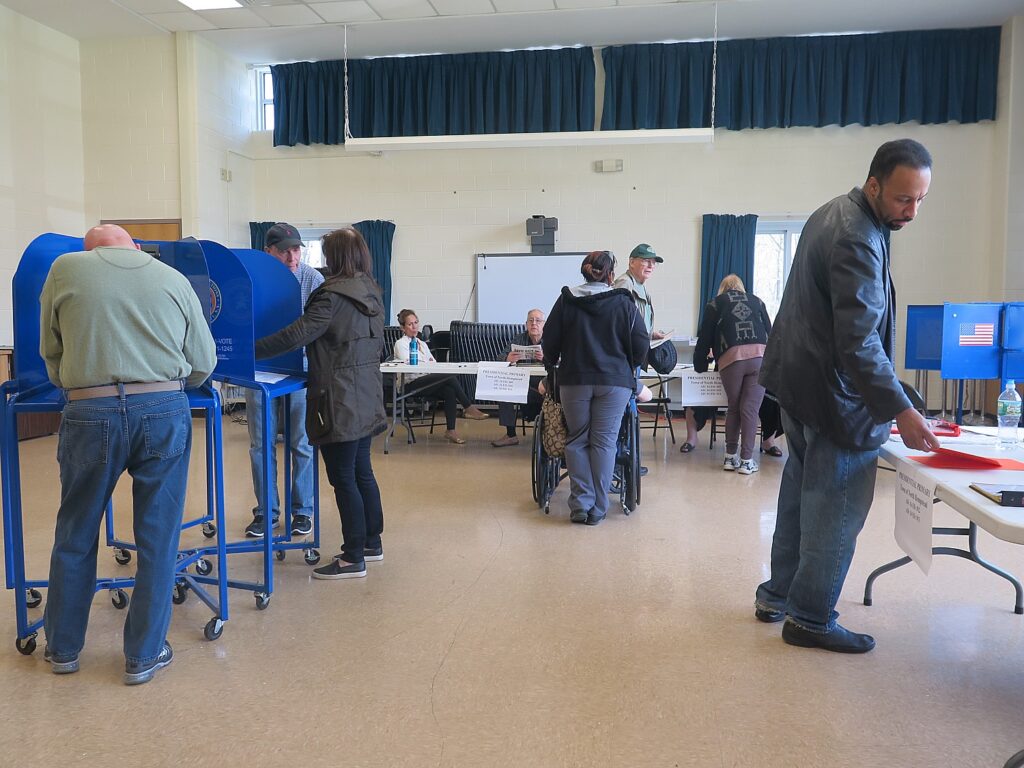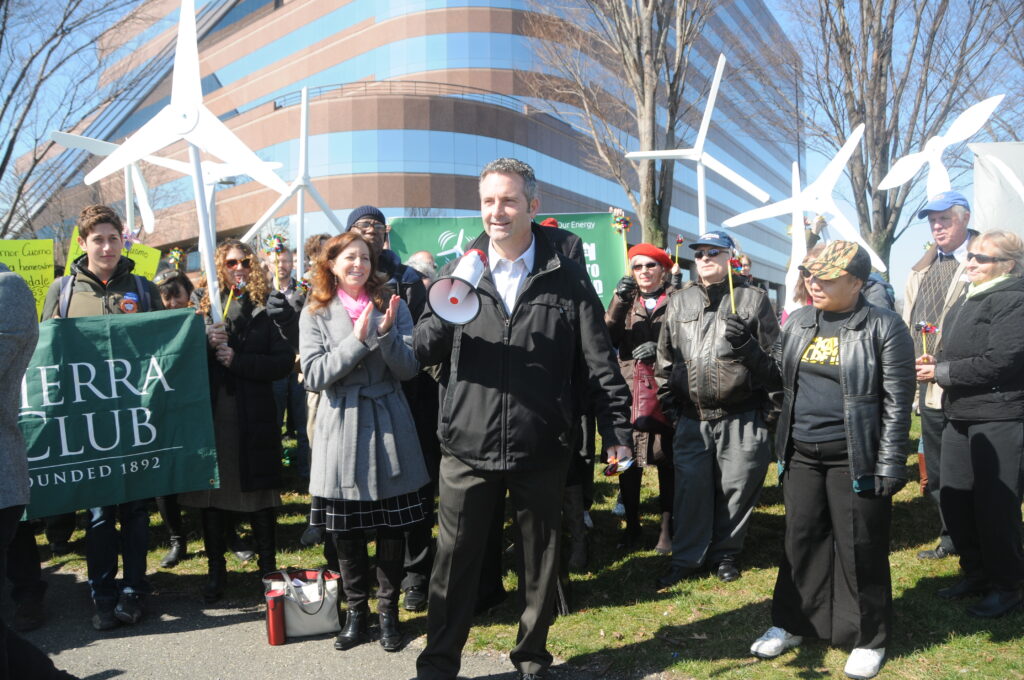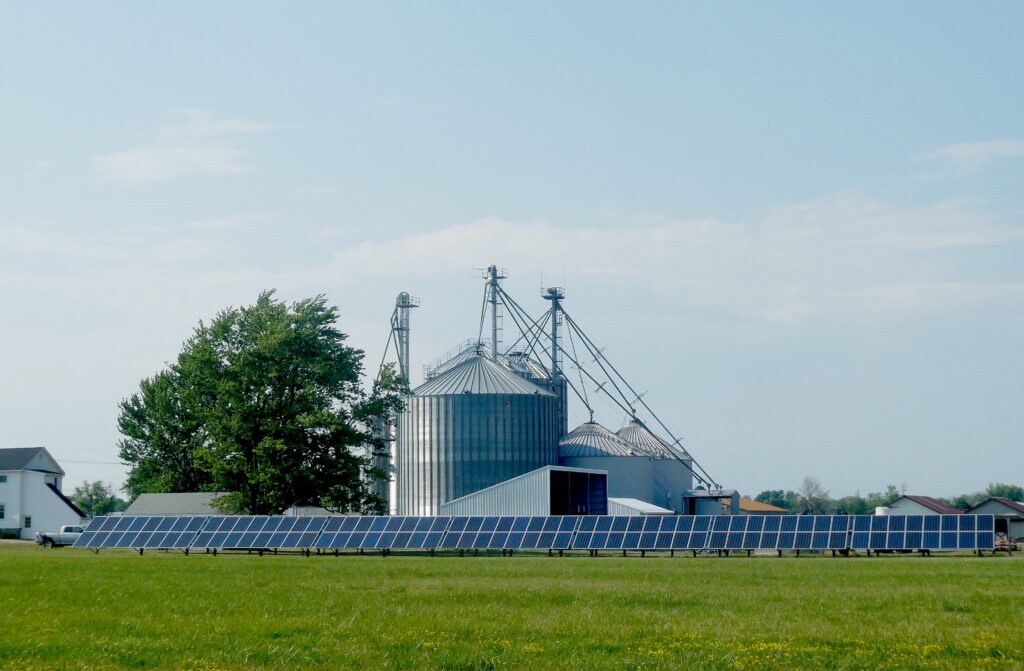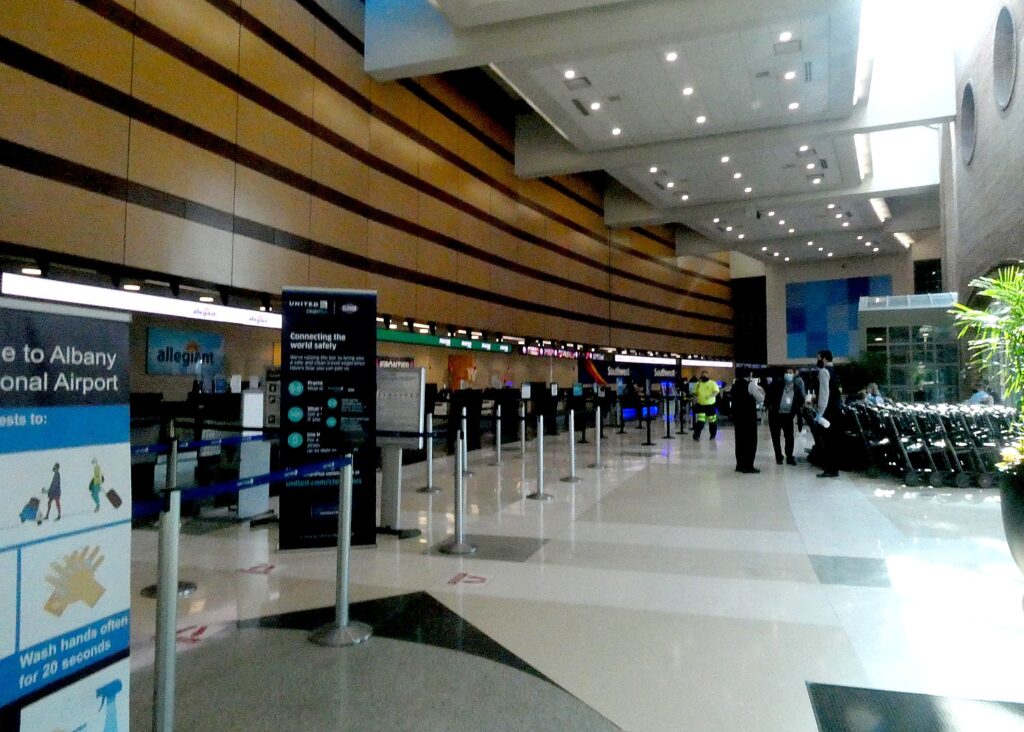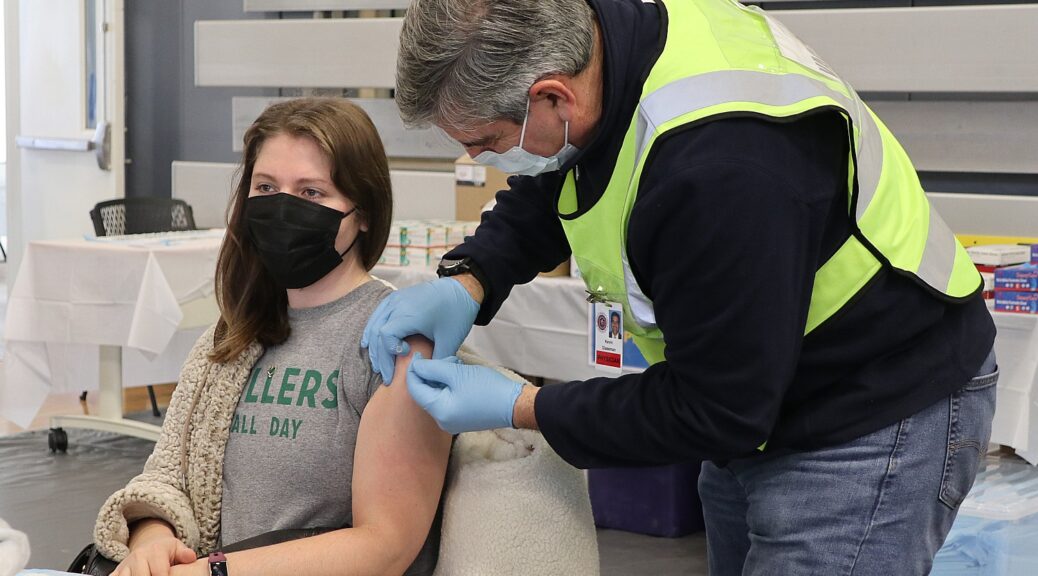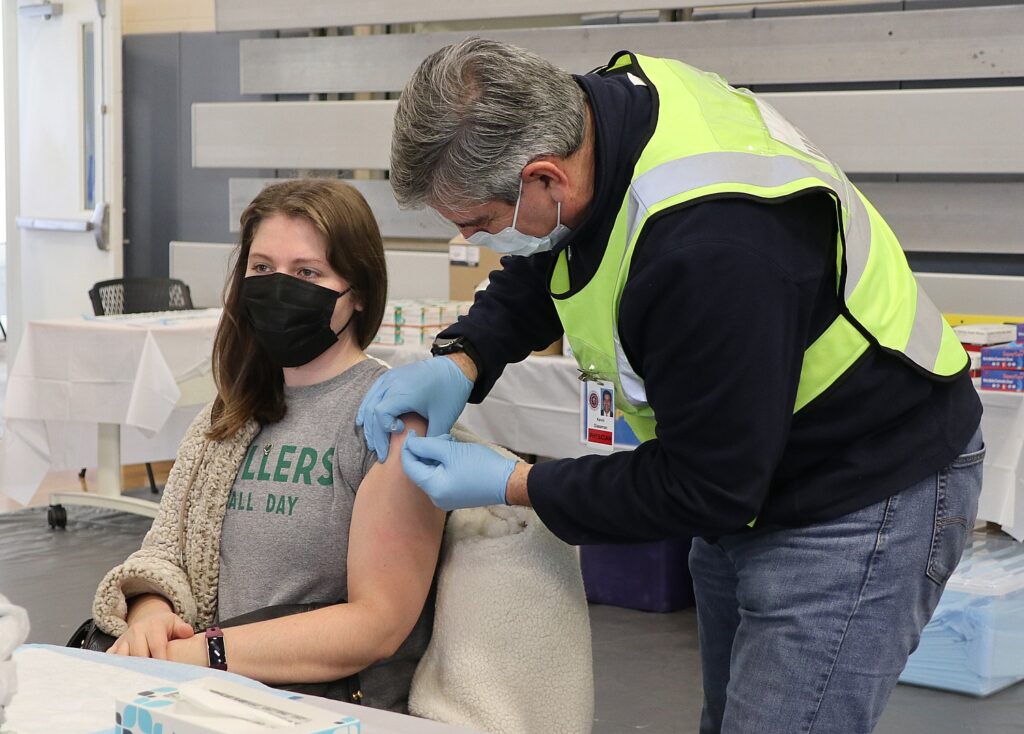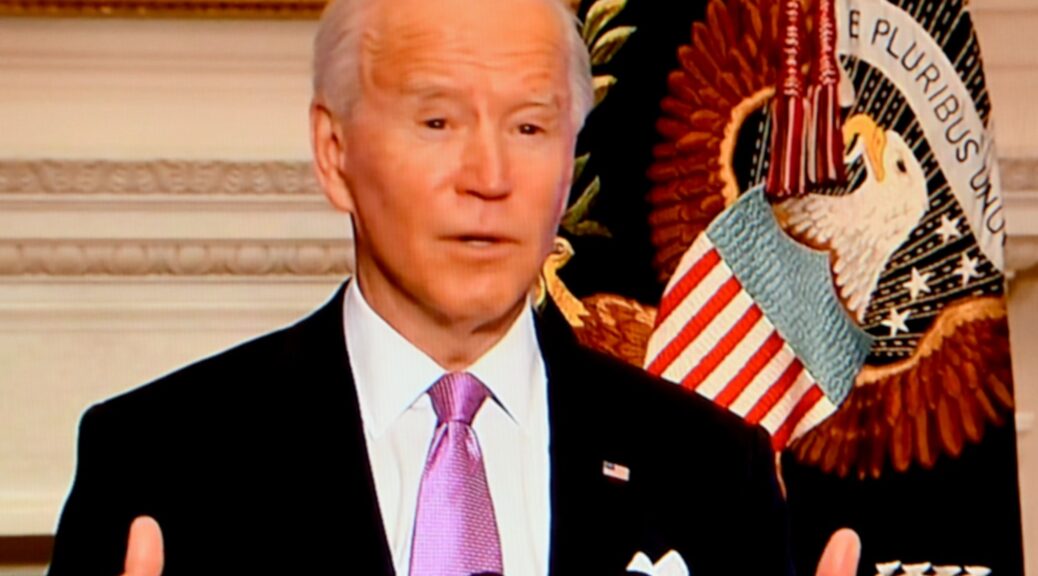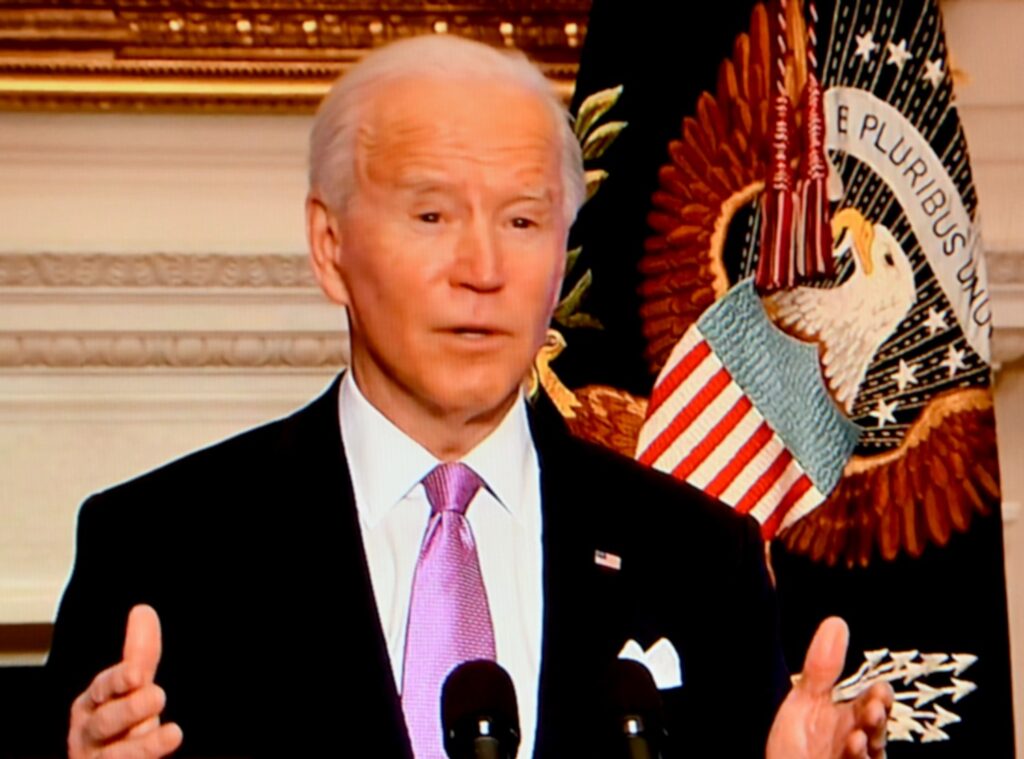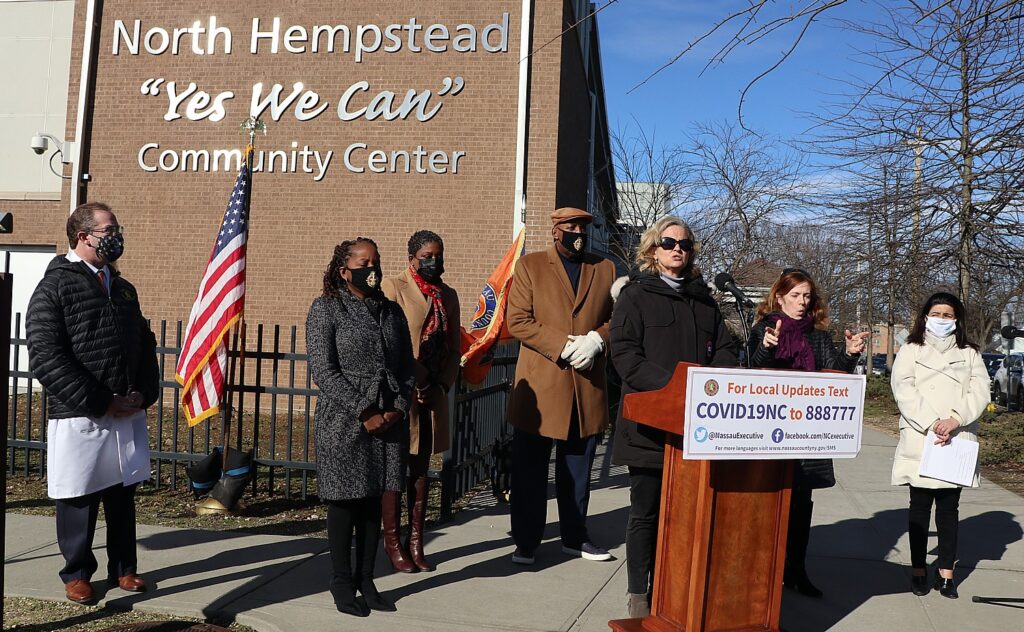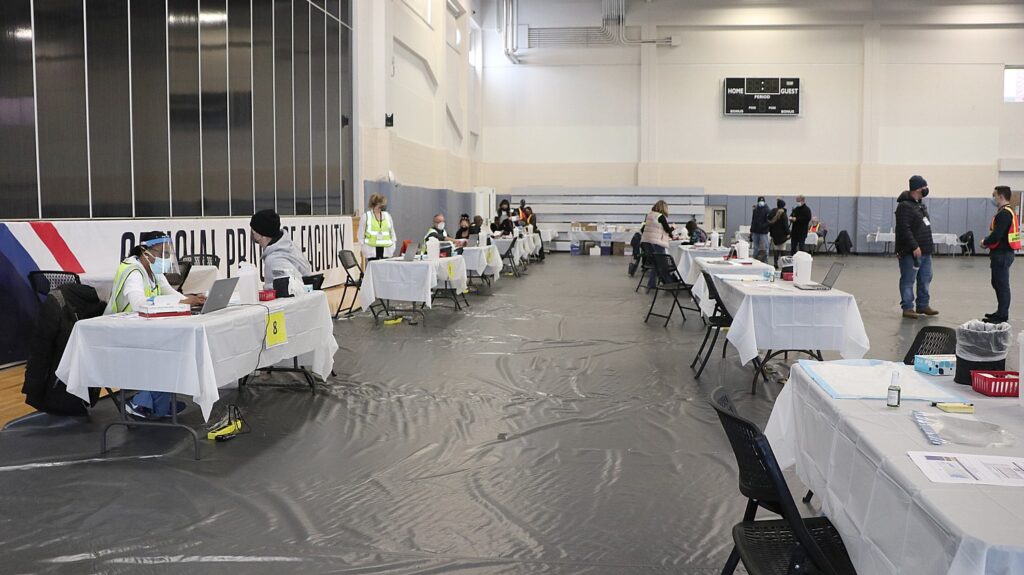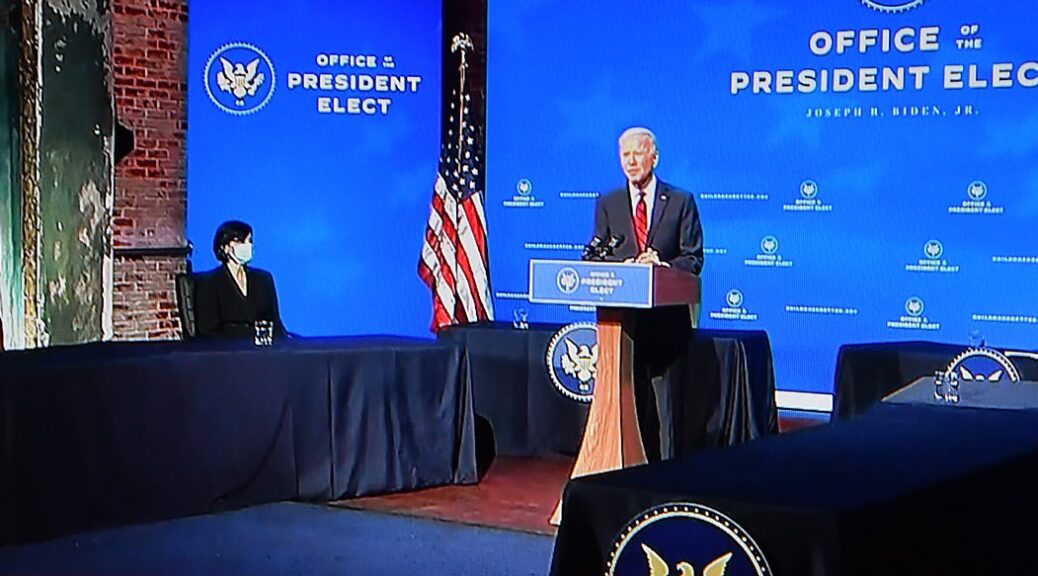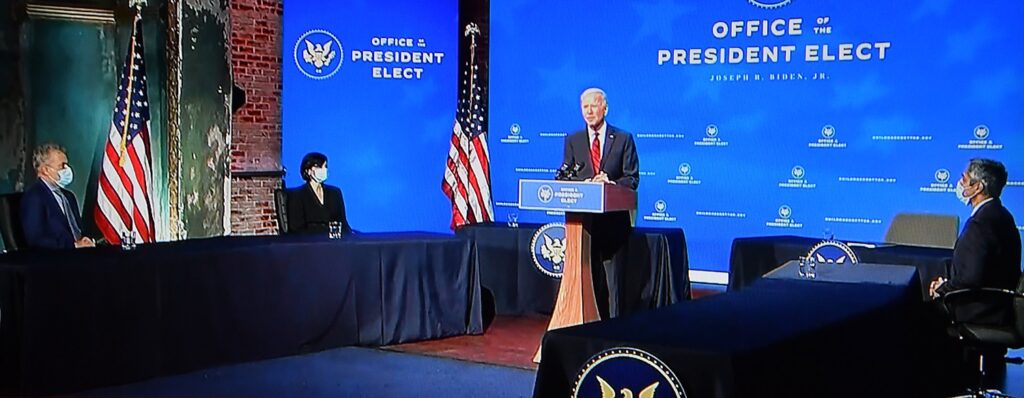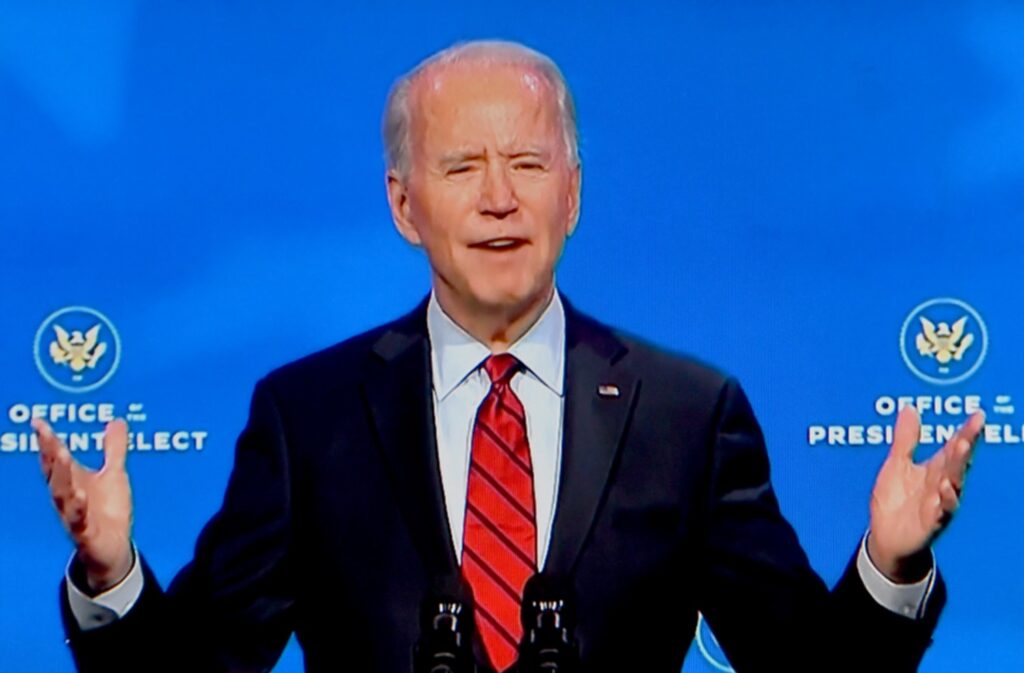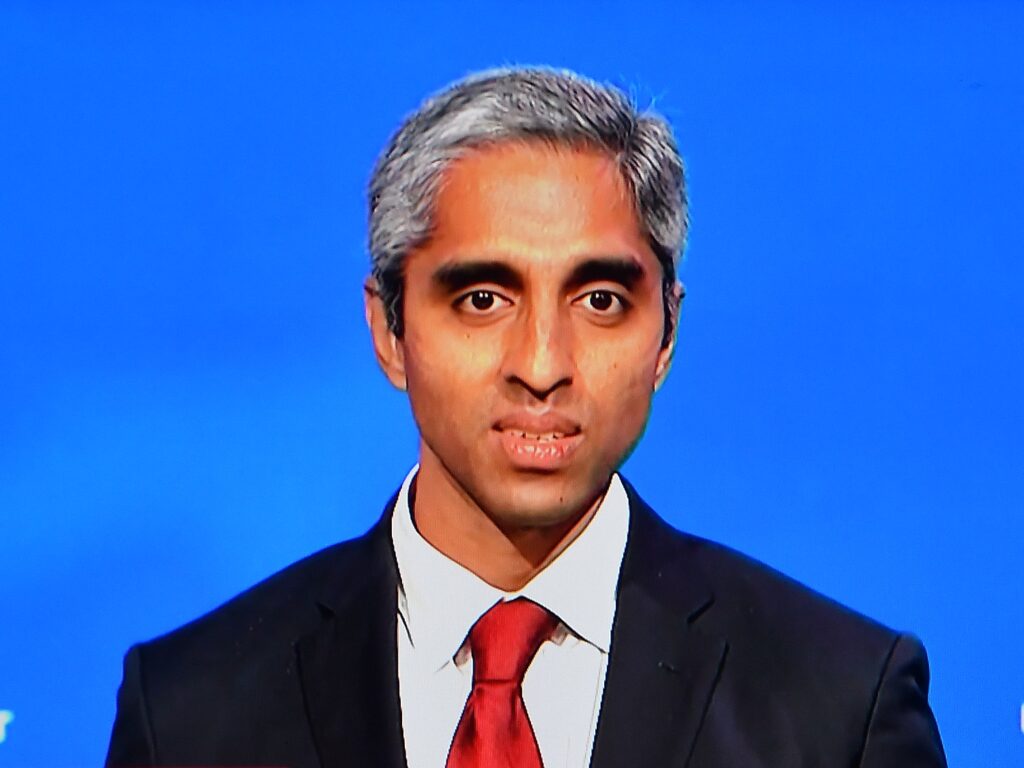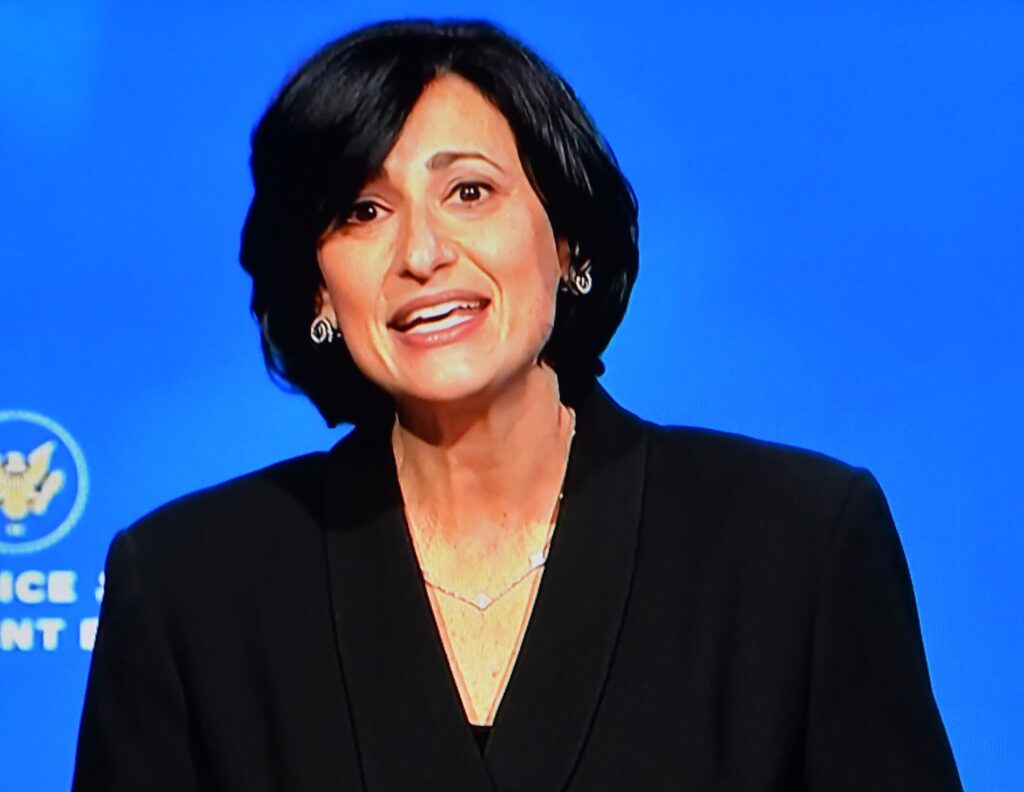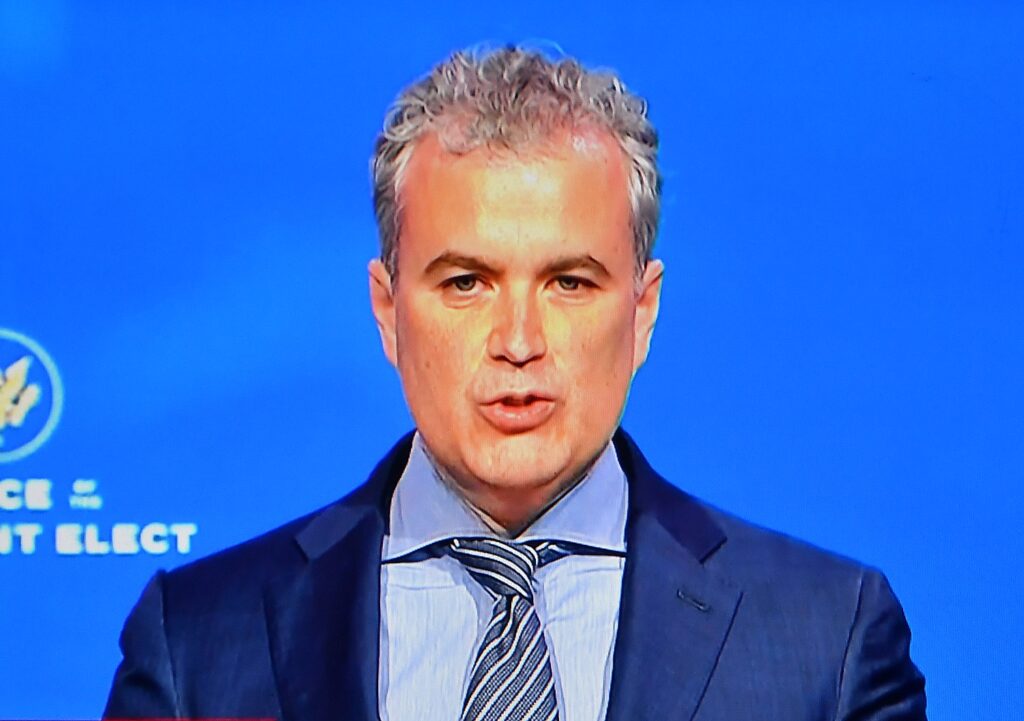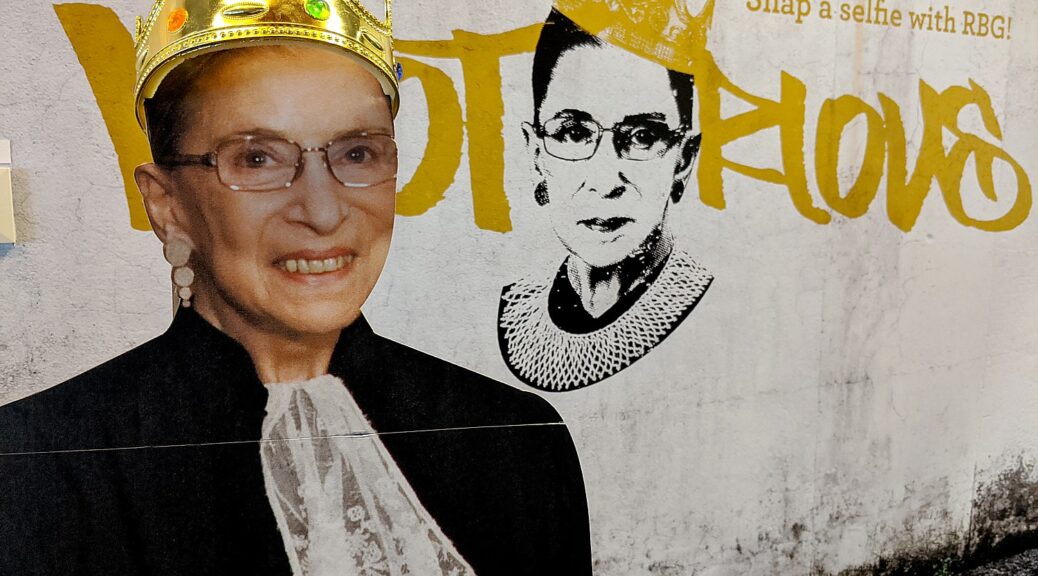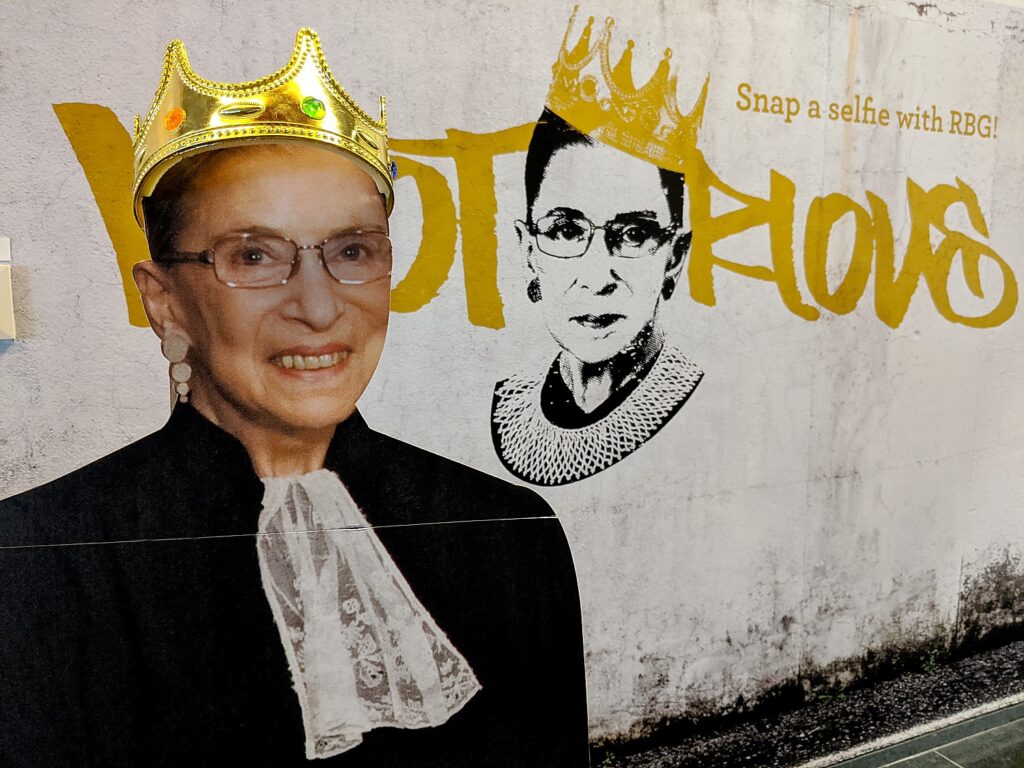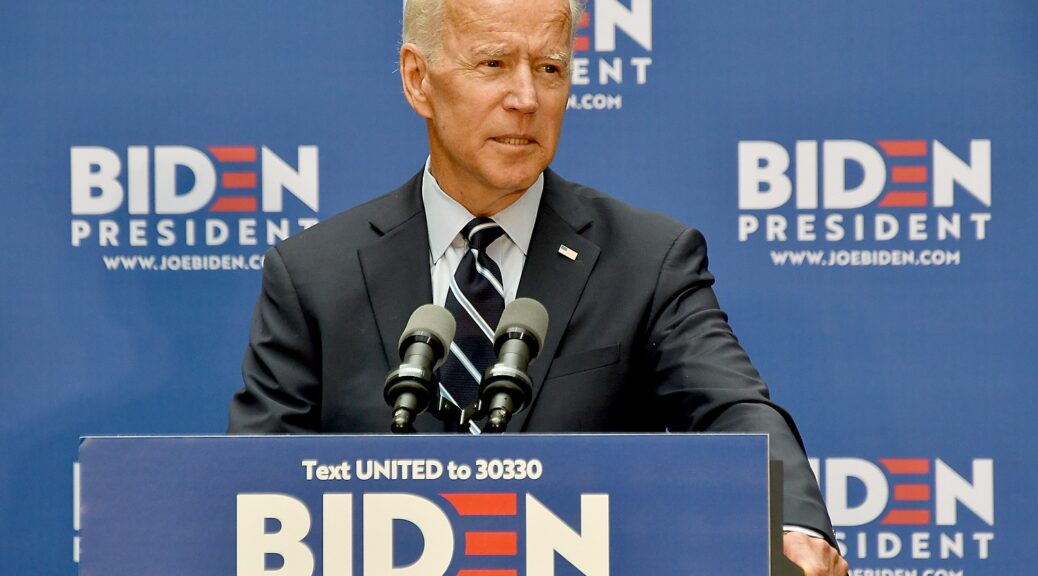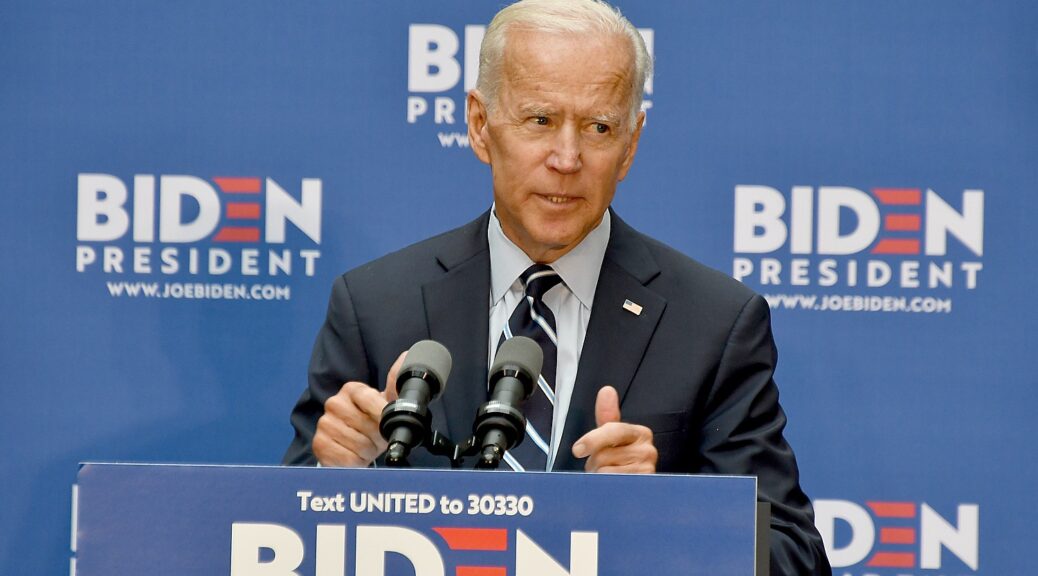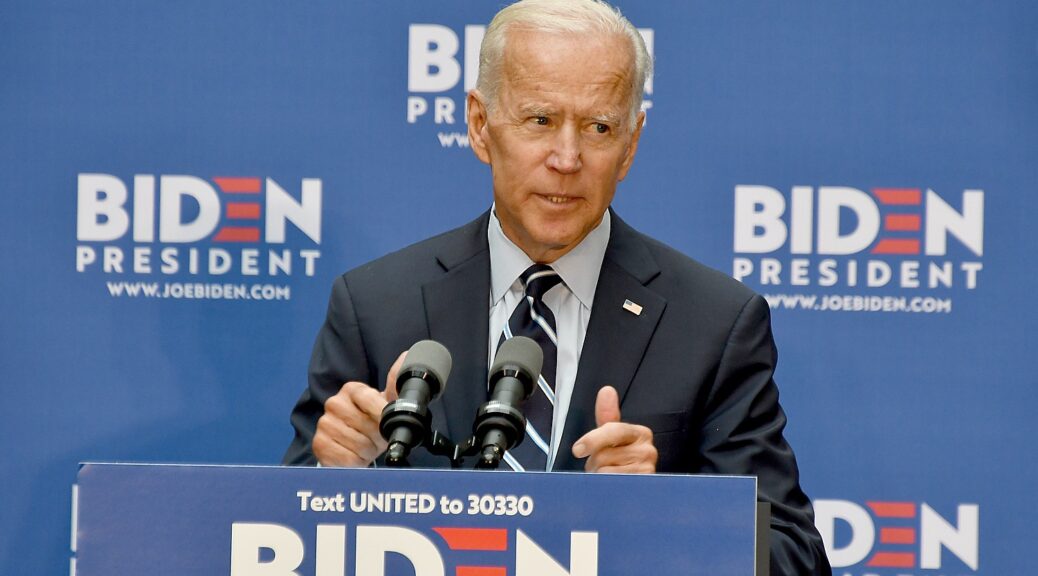
The coronavirus pandemic and the specter of future pandemics. Climate-change borne insects and illness. Advances in medicine and medical technology. The demand for universal health care and equity. With all of these developments are producing new focus and demand for prevention, wellness and self-care.
In other words, don’t get sick and place more stresses on an overwhelmed and unaffordable health care system.
Indeed, the Centers for Disease Control and Prevention estimates that 69 percent of all deaths globally each year are the result of preventable diseases and that the global cost of largely preventable chronic diseases (cardiovascular disease, chronic respiratory disease, diabetes and more) could reach $47 trillion by 2030 (World Economic Forum, 2017).
In light of this, the Global Wellness Institute has launched a fundraising challenge for The Wellness Moonshot: A World Free of Preventable Disease, a global fight to eradicate preventable, chronic diseases. GWI is a nonprofit organization with a mission to empower wellness worldwide by educating the public and private sectors about preventative health and wellness.
At its recent Global Wellness Summit (GWS), the organization unveiled the top nine wellness trends for 2021, the new directions that will have the most meaningful impact on the $4.5 trillion global wellness industry:
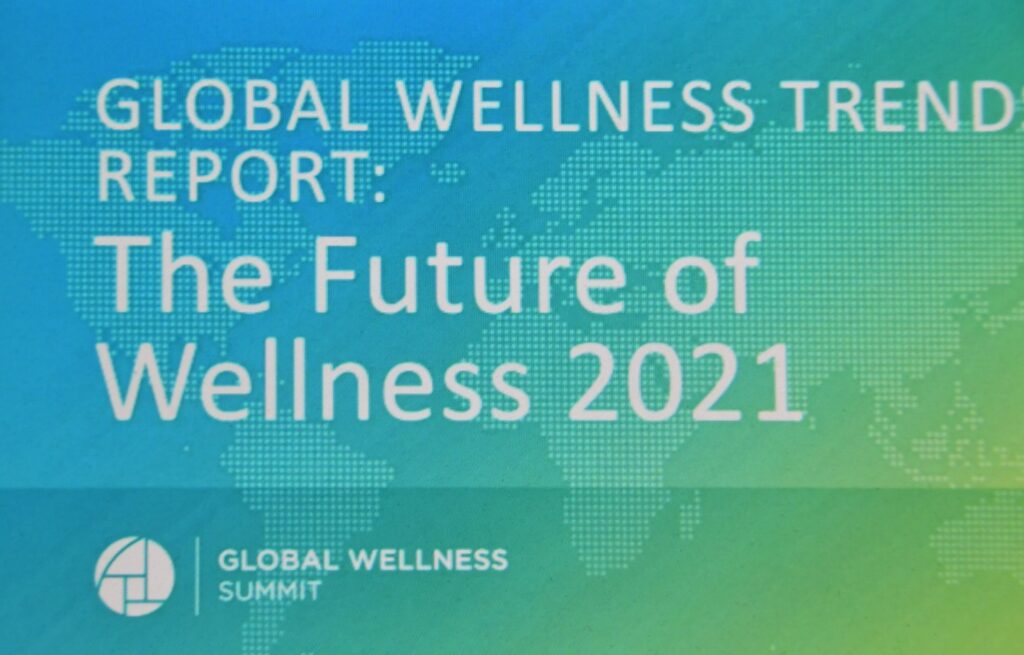
Global Wellness Summit Trends Report: “The Future of Wellness 2021”
In this report, wellness industry analysts and experts identify the nine wellness trends that will have the most meaningful–not fleeting–impact in 2021 and beyond.
- Hollywood and the Entertainment Industries Jump into Wellness
- The Future of Immune Health: Stop Boosting, Start Balancing
- Spiritual and Numinous Moments in Architecture
- Just Breathe!
- The Self-Care Renaissance: Where Wellness and Healthcare Converge
- Adding Color to Wellness
- Resetting Events with Wellness: You may never sit on a banquet chair again
- Money Out Loud: Financial Wellness is Finding Its Voice
- 2021: The Year of the Travel Reset (The year when all travel may become wellness travel)
Forecasting trends in the fast-evolving wellness space is daunting every year. In 2020, we experienced a global pandemic, economic meltdown, racial injustice, polarizing politics, and a mental wellness crisis that changed every aspect of human life. The pandemic made wellness radically more important to people overnight, while the coronavirus exposed the terrible human cost for not controlling chronic, underlying conditions, radically strengthening the case for preventative wellness. At the same time, there was accelerated fatigue with a wellness industry overly focused on elitist, hyper-trendy, evidence-free wellness solutions—which suddenly feel “so 2019.”
Wellness today is at a watershed moment. The trends report reflects how wellness is poised to take a bigger seat at the healthcare table (see “The Self-Care Revolution” trend). It predicts a future industry that will be more inclusive, accessible and affordable (see the “Adding Color to Wellness,” “The Entertainment Industry Jumps into Wellness,” and “Just Breathe!” trends). How it will basically “get real” and more evidence-based (see “The Future of Immune Health: Stop Boosting, Start Balancing”)—and tackle tougher, more crucial human pain-points (see “Money Out Loud: Financial Wellness Is Finding Its Voice”). And the report also predicts how wellness will continue to rewrite vast industries, from travel, to architecture and design, to the meetings industry.
This wellness forecast is based on the insights of hundreds of top executives of wellness companies, economists, doctors, investors, academics and technologists (from dozens of nations) that gathered in person and virtually at the recent Summit to debate where wellness was headed—making for a particularly informed, global set of predictions.
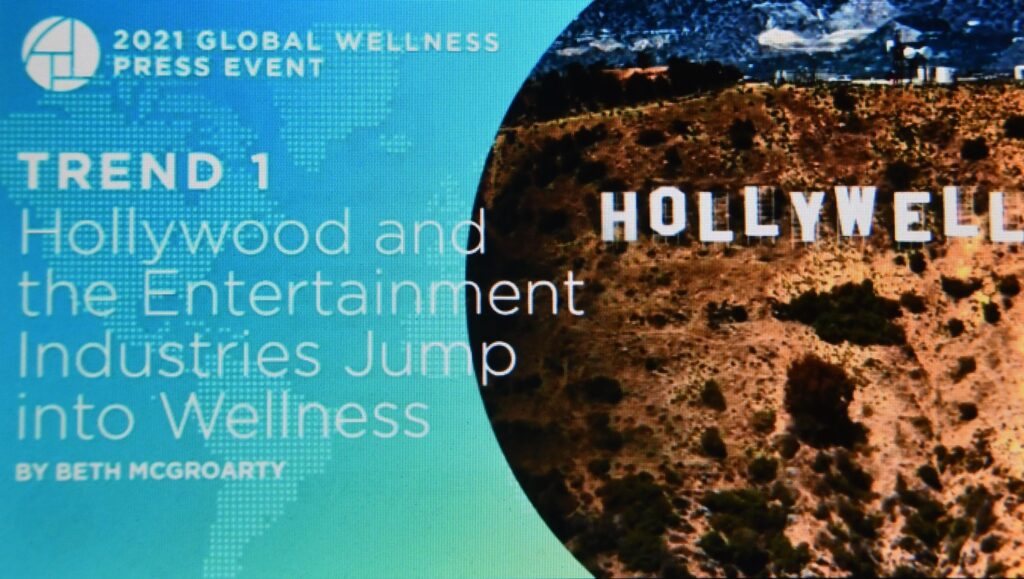
1. Hollywood and the Entertainment Industries Jump into Wellness
By Beth McGroarty, VP, Research & Forecasting, Global Wellness Summit
Wellness will become a bigger, more meaningful programming focus on TV and in the music industry. Big Media is digesting the huge cultural force wellness has become.
For wellness purists, any trend about Goliath TV, music and tech companies moving into wellness programming can cause eye rolls; It must be…inauthentic. But for anyone serious about “wellness for all,” more wellness experiences at Big Media platforms are a story of unprecedented reach, access and affordability.
A New Wellness TV
If wellness programming on TV (whether Oprah or the Goop Lab) has been about wellness as a topic you passively consume, the future is TV content and platforms that involve and impact you.
Smart TVs are baking wellness “channels” onto their home screens. Samsung TVs launched Samsung Health, letting people binge 5,000 hours of free fitness/meditation classes from the buzziest brands. The future: smart TVs (like Apple’s) that connect to your health wearable (like Apple Fitness+) to serve up personalized wellness/fitness experiences right on your TV.Samsung’s 2021 TVs’ “Smart Trainer” does just that: offering real-time coaching as you work out.
Wellness companies are becoming full-blown TV studios. Mega-meditation-apps, Calm and Headspace, recently scored TV shows (HBO Max and Netflix), translating their meditative experiences into immersive television. Meditation apps with TV series? Unthinkable just two years ago.
China is perfecting the marriage of wellness TV programming and e-commerce, and Waterbear Network is a new “Netflix” for climate activism.
Wellness Music Exploding
The ways that music is being created forstress, sleep, focus, a better workout, or just trippy, ambient bliss…has kicked into high gear. It’s a paradigm shift: If music has always been consumed around artist, song and genre, now it’s “serve me music-as-therapy (with a specific emotional vibe), exactly when I need it.”
The big music sites (Spotify, Amazon, Apple) are really ramping up their music-for-wellbeing content, making “wellness” a new listening channel. Think: rock, jazz, hip-hop… “chill”… “sleep.”
Meditation apps are becoming big wellness music “record labels.” Calm’s music division keeps partnering with more big artists for adult lullabies or chill-out tracks. Headspace just named its first Chief Music Officer and came out swinging by hiring John Legend to create its original wellness music.
More apps are launching, specifically focused on music-for-wellbeing: the new Myndstream app and label produce music to help people chill out, sleep or focus; Muru Music Health, the first streaming platform aimed at people over 60, uses AI to deliver tailor-made music to prevent brain aging. The Soul Medicine app serves up music all composed around a 432 MHz frequency, which studies have shown works to synch sides of your brain and decrease heart rate.
Generative music technology—where your biometrics meet neuroscientist-designed sound—will take sound-as-precision-medicine to radical places, moving out of start-up labs and onto bigger media platforms. Endel pulls your heart rate, movement and circadian data to create a constantly changing “sound blanket” to help you de-stress, focus and sleep. They have big plans, including creating “smart house” tech that constantly adapts sound, light and temperature based on your physical/mental state.
Celebrities are now all over wellness, not just as spokespeople but as company founders, execs, and major investors. They are a rising, not-to-be-ignored force in the global wellness investment space.
Sure, many dream of creating the next money-minting GOOP empire, but it’s more than that: Wellness is becoming a powerful way for celebrities to positively rebrand during a health, racial inequity and environmental crisis. More celebs will keep investing in wellness brands that tackle serious social issues—from women’s sexual wellness to bringing wellness to Black and brown communities. Selena Gomez’s new brand Rare Beauty underwrites her Rare Impact Fund, pledging $100 million for mental health services in underserved communities.
The future: more collaborations between Big Media (who know a few things about high-quality, immersive content) and the wellness world (who has done a far better job than doctors in getting people obsessed with health).We need binge-able wellness programming—of all kinds. A trend that could impact billions of lives and feels awfully overdue.
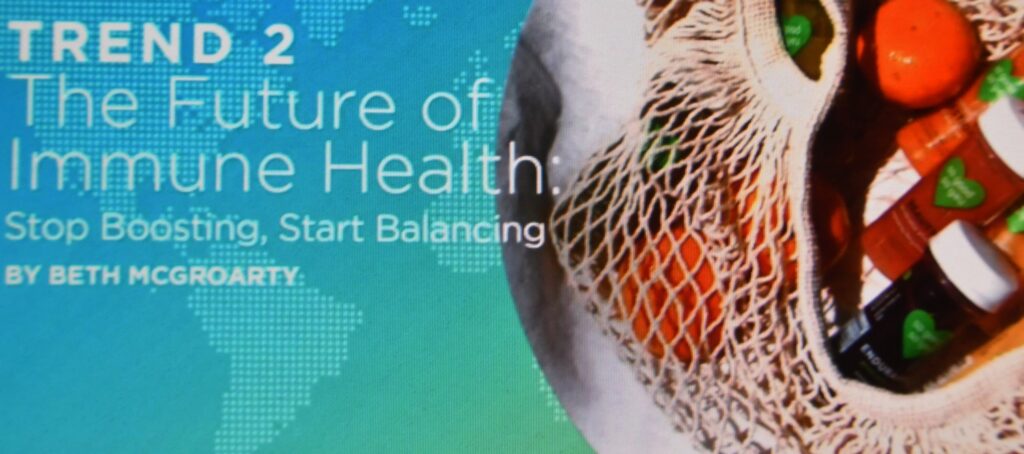
2. The Future of Immune Health: Stop Boosting, Start Balancing
By Beth McGroarty, VP, Research & Forecasting, Global Wellness Summit
People were blitzed with “immune-boosting” supplements, foods and therapies in 2020. The future: more evidence-backed approaches to immune health, with metabolic health, the microbiome, and personalized nutrition becoming crucial—along with more experimentation with everything from “positive stress” experiences to intermittent fasting for immune resilience.
We join many forecasters in naming immune health a 2021 trend, not only because we agree that it will remain a consumer obsession post-vaccine but because the main ways the wellness industry has been addressing it are…flat-out wrong.
First, the idea that you can “boost” your immunity is unscientific nonsense, and “more boosting” is precisely the wrong approach: A supercharged immune system leads to the body attacking itself, the pathway to autoimmune diseases, and the cytokine storm that killed COVID-19 patients.
Second, the wellness market has led with pop-it, guzzle-it, IV-drip-it, “immune-boosting” superfoods and supplements, none of which can change the complex immune system much. So many sexy products like elderberry-adaptogen gummies in prescription-like bottles. How did wellness become such a Big-Pharma-simulating world?
The future: approaches that lead to immuno-stabilization, immuno-balance. Most are the untrendy pillars of wellness: exercise, sleep and stress-reduction.
But with new research and lessons from COVID-19, some things become far more important:
Metabolic health: COVID-19 brutally exposed the connection between metabolic ill-health and immune dysfunction, as people with metabolic issues (far more widespread than obesity and diabetes) were more likely to get sick and die. The #1 thing to strengthen our immunity: refocus on diets that drive metabolic health (and stop the profusion of trendy ones that don’t). This means embracing some version of the Mediterranean Diet.
The microbiome: An incredible 70% of our immune system is headquartered in our “gut.” And new research from PREDICT (the world’s largest research project on how individuals respond to food) on the gut-immune health connection is profound, finding diet is the # 1 determinant of our microbiome (trumping genetics). Other new studies have found that the gut microorganisms of COVID-19 patients look radically different than those of uninfected people.
More people will embrace the generic gut-health weapons: fiber-rich, whole, unprocessed foods; prebiotics; fermented probiotics; and now even postbiotics are coming. New research shows that the same foods impact individuals’ microbiomes (and metabolic health) very differently, so labs are working overtime to crack the insanely complex, 100-trillion-cell microbiome to create better testing models for personalized nutrition. Two scientist-founded microbiome testing companies to watch: Israel’s Day Two and Zoe Global, founded by the doctors behind PREDICT.
Personalized nutrition: All of this means far greater urgency for personalized nutrition in general. The gold standard: advanced, integrated genetic, bloodmarker, and microbiome testing (and UCSF is working on). So many companies are putting together the pieces in the meantime, such as MYX Health, using one-prick bloodspot tech to test everything from average blood sugar levels to inflammation markers for tailored nutrition plans.
We’ll see more experimentation with:
Intermittent fasting: Research mounts that intermittent fasting can dramatically “flip the switch” on immune system regeneration. Studies also indicate that daily fasting windows and special “fast-mimicking” diets show significant, positive immune impact, but multi-day, water-only fasts hurt immune response.
“Positive stress” experiences: Human immune systems evolved around constant, short stresses (how we survived), but now we sit at desks with temperatures always tuned to 72 degrees. Voluntary “positive stress” experiences—hot and cold; fasting; types of breathwork; high-intensity, short bursts of exercise—are proven to have a short-term, positive immune effect. All will rise in wellness, from the Wim Hof Method to wild swimming to home infrared saunas. The first human clinical trial testing on whether regular positive stress experiences have a long-term impact on our cellular biology and the immune system is coming soon.
“Immunity travel”: Wellness resorts rushed to immunity programs when the pandemic hit: so many add-on, “immune-boosting” menus and IV drips. Now destinations will go deeper, more medical, and revolve around interventions that matter more: from in-depth metabolic and immune profile testing to gut health and personalized nutrition—such as Germany’s Buchinger Wilhelmi. Biohacking centers, such as BelleCell in London, are deploying futuristic tech, such as IV laser therapy and hyperbaric oxygen chambers, to target “cellular bioresilience” and the immune system.
After a long 2020, people are aware that their immune health is a holistic affair, that food and the microbiome are lynchpins, and that “slow” not “hyper” strategies are the difference-makers. People will keep gobbling trendy quick-fixes in trendy bottles, but they’re ready for more. A wellness industry newly focused on the hard—and fast-evolving—immune science could extend and save many lives. And help its own reputation along the way.
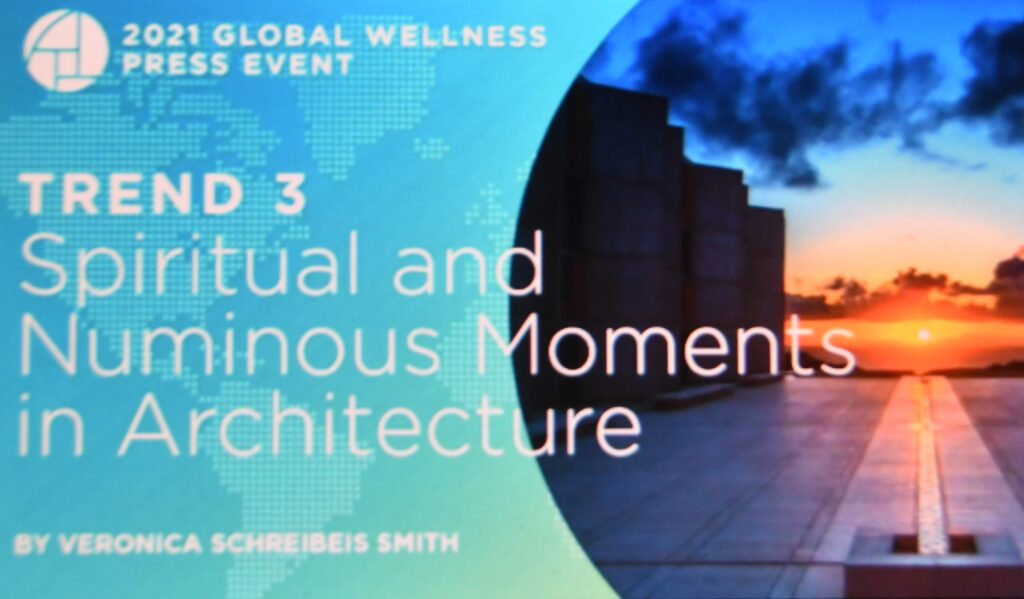
3. Spiritual and Numinous Moments in Architecture
By Veronica Schreibeis Smith, Founding Principal, Vera Iconica Architecture and Developments
In recent years, a storm of studies has demonstrated the powerful connection between the built environment and our physical health, and a new “wellness architecture” has taken off, heavily focused on functional design moves, whether circadian lighting or air purification.
What has been glossed over is design that can tap into and nurture our spirituality. In 2021, we will see new attention paid to creating everyday spaces that can incite sacred and numinous moments, that elevate our consciousness and potential, and ground us in gravitas in the midst of a mindless, consumerist society. Architecture and design will move up Maslow’s Pyramid, from our recent era of look-at-me, visually ostentatious fads (luxury McMansions that reside in the “Esteem” tier) to a new architecture reaching for the “Self-Actualization” tier—a built environment that can move our souls.
Thin places: We will see more experimentation with creating special “thin places” that dissolve the veil between ordinary, everyday places and the sacred realm. Architect Dr. Phillip Tabb has identified 16 shared traits, including transitioning into the space with a threshold, much light and luminosity, and the beneficial manifestations of nature. Thin places move us from the secular, overwhelming pace of our daily lives to a sacred, more empowered state, and neuroscience has shown that this non-ordinary architecture has the same impact on our brains as meditation.
Ancient revivals: Feng shui principles are well-known, but we will see interest in other ancient traditions such as Vastu architecture, which also uses techniques like orientation, proportions, astrology, placement of rooms/furnishings, and blessing ceremonies to improve human energy. There will be more interest in sacred geometry and BioGeometry to create spiritual spaces rooted in the math of nature. And we will see a revival of the temple in both faith-based and everyday architecture.
“Nudge architecture”: Nudge architecture is the concept ofdesigning cues into the environment that influence behavior while still allowing people to make their own choices. For example, placing meditation coves in workplace courtyards (baking spirituality into everyday life) or placing a beautiful stairway in building entries and tucking elevators into back corridors (baking movement into life).
A Spiritual Home: We will rethink layouts in our homes that we take for granted, such as designing the “bath room” as an elevated space for bathing rituals rather than basic hygiene (i.e., the toilet must move). Wellness kitchens[1] will be designed so that preparing whole foods becomes a joyful, relaxing ritual—and bedrooms will become sleep sanctuaries, thoughtfully arranged to reflect the sacredness of winding down in preparation for dreamtime.
The new spiritual architecture means we will no longer accept secular environments that disregard a need to uplift us emotionally, maximize our cognitive performance, bring us to the present moment, and allow us space to breathe and be mindful. Spiritual wellbeing is an inextricable part of a well life and rightfully deserves more design consideration and designated spaces in our homes, workplaces, communities and urban landscapes.
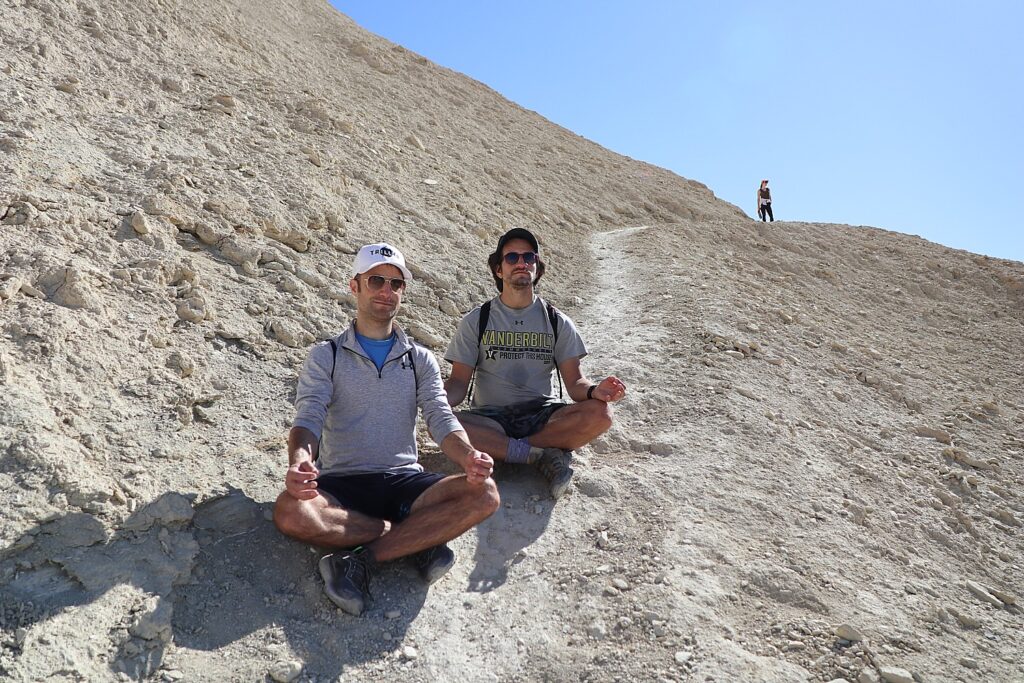
4. Just Breathe!
By Sandra Ballentine, Editor at Large, W Magazine
Contrary to popular belief, you don’t need to know where your chakras are or what a didgeridoo sounds like to do breathwork. An increasing number of clinical studies from major universities like Harvard, Stanford and Johns Hopkins are putting science and data behind something we’ve actually known for centuries—the way we breathe has profound effects on our mental and physical health and abilities. It might even help us strengthen our immune systems. Many of us have heard of top performers (think leading athletes, elite military personnel and major rock stars) using their breath to aid focus and reduce fear at critical moments, but the beauty of breath is that anyone can access its power, even children.
This trend explores the people, the techniques, the places, and the new technologies pushing the practical magic of breathwork into exciting—and important—new directions.
Practitioners are bringing breathwork to ever-larger audiences and pushing it into fascinating new territories, including rehabilitation, fitness and community building and relief from chronic stress, trauma and PTSD. Breath artist, Sage Rader, brings modern breathwork to the masses with a rock-star delivery, alchemizing science and spirituality into entertainment, while Jasmine Marie’s Black Girls Breathing delivers meditational breathwork as mental healthcare for Black women. This trend looks at techniques, whether nose breathing, the lengthened exhale, or the “sigh,” as specific brain and body medicine.
Cool, clubby breathwork parties and festivals are rising, such as Donovan McGrath’s (creator of Amplified Yoga, one of L.A.’s hottest live music-driven fitness classes) plans to introduce Amplified Ecstatic Breath, a breathwork social hour (complete with mood-shifting lights and a live DJ) as soon as people can meet again. Hospitality is taking a much bigger breath, with more—and more diverse—breathwork programming everywhere from Six Senses’ global resorts to Chablé Yucatan and Chablé Maroma in Mexico.
If breathwork apps have been around, gaining traction now are handheld devices that track air quality and fitness/health wearables that incorporate breathing-related metrics like breathing rate, pulse oximetry, heart-rate variability and habitual breathing patterns. There’s so much action in breath-tech, such as Israel-based start-up Anicca set to launch its Companion device, which regulates the wearer’s emotions by amplifying the sensation of their breathing as a calming vibration on their body.
Certain breathing techniques can help strengthen the lungs post-COVID-19, and there are even studies that point to breathwork as a possible therapeutic for one of the world’s deadliest diseases: hypertension. Perhaps the best part of all—this drug-free medicine costs absolutely nothing. And with so many accessible techniques and styles to choose from, there really is something for everyone and every situation.
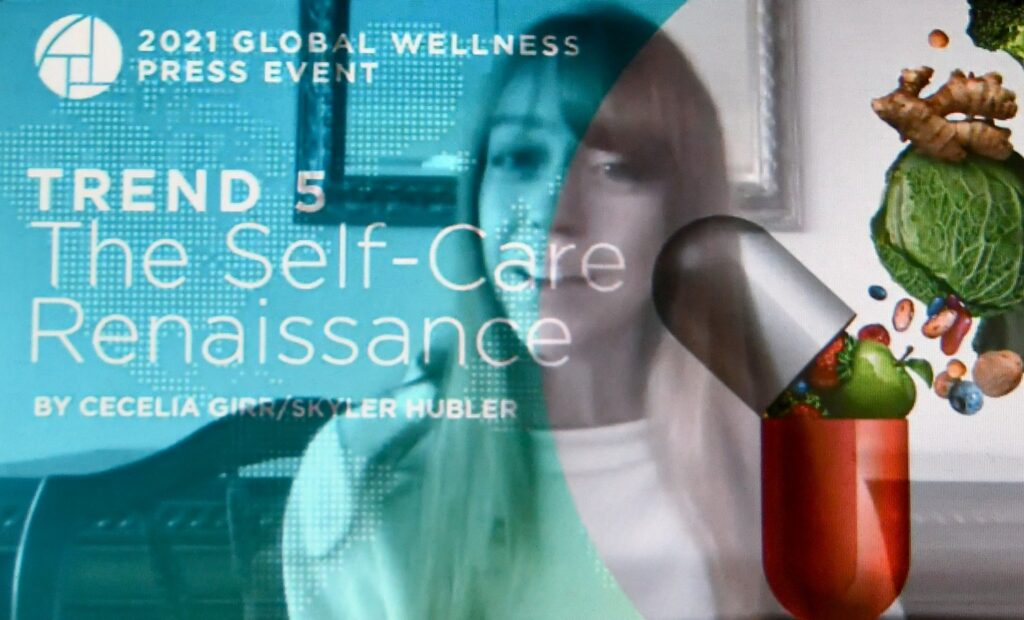
5. The Self-Care Renaissance: Where Wellness and Healthcare Converge
By Cecelia Girr & Skyler Hubler of Backslash, TBWA Worldwide
From 1400–1700, the Medical Renaissance marked a historic breakthrough in our approach to healthcare. Science began to dominate superstition. Anatomical discoveries paved the way for modern medicine. And yes, vaccines were in development.
Over three hundred years later, we’re undergoing a new kind of medical renaissance. One where two complementary yet often competing entities—healthcare and wellness—will converge. Wellness is learning to lean into science, establish standards, and hold itself accountable. At the same time, healthcare is beginning to borrow from the wellness playbook—transforming a once sterile and strictly curative industry into a more holistic, lifestyle-oriented, and even pleasurable one. In this new era, hospitals will take inspiration from five-star resorts, yoga studios might measure improved telomere length, and prescriptions may be coupled with hyper-personalized guides to optimal health.
Promising signs of governments, doctors and medicine giving wellness wings for widespread adoption are already emerging. Over in Singapore, for example, the government is teaming up with the world’s biggest tech giant to create a healthier society. Through the LumiHealth app and Apple Watch, Singaporeans can participate in country-wide wellness challenges and access personalized health programs until 2022.
On the other end of the spectrum, we’re seeing healthcare take cues from the more pleasurable parts of wellness. Even the most dreaded semi-annual appointment—the dentist—is being rebranded as a self-care experience. Think seasonal toothpaste flavors, massage chairs in the lobby, and yes—your favorite Netflix show streaming on the ceiling.
As we look to a future where healthcare and wellness converge, there’s no better visual representation than Octave’s Sangha Retreat in Suzhou, China. On the property, there’s a corridor that runs from one side to the other. One end is home to conventional medicine, and the other hosts wellness practices ranging from acupuncture to more “out-there” devices that measure the age of your soul. Visitors are free to flow between the two sides based on their needs.
The corridor at the Sangha Retreat presents what we believe is next for healthcare and wellness. A kind of yin yang approach where two seemingly opposing forces finally discover that they can—and must—work together. As Dr. Kenneth R. Pelletier puts it, “Medicine is realizing that its roots have come from wellness traditions, and the wellness community is recognizing that not all doctors are evil.”
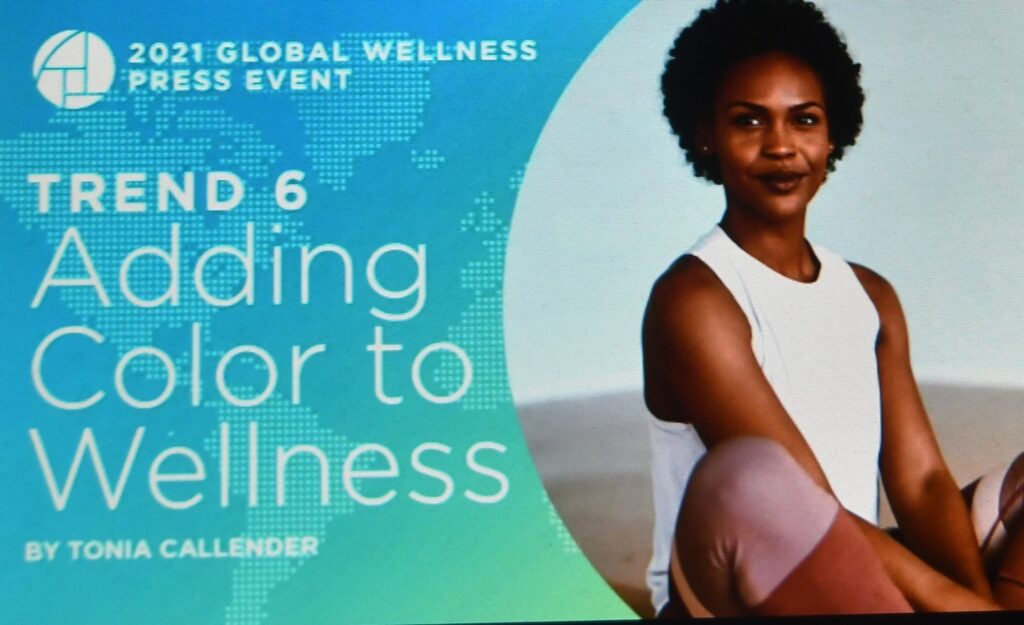
6. Adding Color to Wellness
A personal and professional reflection, as a Black woman living in the US, who researches the wellness industry
By Tonia Callender, Research Fellow, Global Wellness Institute
Graphic videos and the protests of last summer prompted many businesses to voice support for anti-racism. While diversity and inclusion have become a popular topic in the wellness industry, mainstream wellness companies ignore Black wellness consumers and rarely market to them.
Moreover, the industry disregards the value that talented Black wellness professionals can bring to wellness spaces, limiting them to entry-level or maintenance positions. This essay argues that to generate substantive change, the wellness industry must recognize and address the false narrative that wellness is for affluent white people. It discusses how the industry can add color to wellness by valuing Black consumers and wellness professionals and describes the different ways that Black people actually experience wellness offerings and spaces, highlighting racial inequalities.
Unequal wealth and the continued effects of residential segregation, racial bias and discrimination hinder Black wellness. Lack of access to good education, clean air, healthy food, potable water, and good health care hamper this ethnic group’s ability to protect and nurture its wellness. When compared to their fellow white citizens, Black Americans are more stressed and less healthy but have fewer choices. Racial bias and structural barriers continue to force unequal wellness options on Black people. Most importantly, for many people of color, even the least costly wellness practices can be difficult to pursue. This essay discusses some of the obstacles facing Black people who pursue wellness activities while providing a personal perspective on Black wellness experiences. Whether appreciating nature or engaging in physical activity, Black people face a different wellness landscape. For example, when it comes to mental wellbeing, they have more stress and fewer options.
This piece also provides insights into the future, illustrating how companies are changing the wellness narrative and giving suggestions for how the wellness industry can add color to wellness. The industry can support Black wellness by allowing non-white groups to also shape the wellness narrative, incorporating Black wellness needs into services, spaces and products and valuing black wellness professionals. Companies such as Fenty Beauty in the beauty sector and the Shine app in the mental wellness space have found substantial success by incorporating Black wellness into their products and services, and both companies represent the vision of people of color who reject the current mainstream wellness narrative. They have not focused solely on Black wellness but have incorporated the needs of Black people into their wellness offerings.
Global consumer markets are becoming more diverse, and Black and brown consumers are witnessing increased purchasing power. Companies that value wellness for all racial groups and income levels will thrive as they expand their consumer markets and increase business innovation and profitability. Wellness enterprises that value diversity, respect Black wellness needs, and work to support more equitable access, represent the future of wellness.
7. Resetting Events with Wellness: You may never sit on a banquet chair again
By NancyDavis, Chief Creative Officer and Executive Director, GWI & GWS
In mid-March 2020, the pandemic brought in-person events to an abrupt halt. And no matter the power of technology and the gratitude we felt for Zoomed Wi-Fi connectivity, the world hungered for personal interactions.
But there was a silver lining: a new trend that will forever change meetings and events was born, with wellness at the core. The trend reinforces top-of-mind topics like health, safety and immunity and employs new protocols and technologies that mitigate risk in engaging ways. In 2021 and beyond, creativity is driving connection—and how we gather is taking on new—and healthier—meanings.
As the months passed, conflicting issues continued to converge in the world of meetings and events: a pent-up desire to travel, the still-spreading coronavirus, the uptick in virtual technologies, coupled with the unending human desire and need for connection.
The answer? New hybrid events (in-person and virtual gatherings) sprouted like mushrooms after a spring rain. Technology companies raced to be the platform for hosting hybrid meetings. Investors threw money at tech companies, and within months of the pandemic shutting down most in-person gatherings, new companies had taken hold, and a new world was emerging.
Moreover, the pandemic also generated the opportunity to reimagine not only how an event would take place but also how it could be healthier. The spark that ultimately combusted for the Global Wellness Summit (GWS) was an idea to “reset events with wellness” in an authentic and powerful way—ultimately creating a new trend for 2021.
The 14th annual Summit was to take place in November in Tel Aviv. However, when COVID-19 hit, the GWS quickly pivoted to a “Safe Summit.” The now smaller event moved from Tel Aviv to The Breakers Palm Beach, and a virtual aspect was added, allowing more people to attend. A former US Surgeon General because the conference Medical Advisor, banquet seating became wellness stations, mandatory COVID-19 testing and temperature checks replaced handshakes and hugs, and buffet breaks were transformed to healthy snacks presented for carrying away. Mood lighting was turned into far-UVC and air purification, reducing viral load, and fun was reimaged with a “Mask-erade” with Distanced Disco Dancing.
Over 100 delegates attended the 2020 Global Wellness Summit in person at The Breakers, and over 500 attendees logged in virtually. It set a new standard for meetings and provided a road map for the future of healthy events.
8. Money Out Loud: Financial Wellness is Finding Its Voice
By Cecelia Girr & Skyler Hubler of Backslash, TBWA Worldwide
Money has topped the “do-not-discuss” list for decades—right alongside religion, sex and politics. But it’s 2021, and transparency is trending. A culture craving authenticity is breaking the money taboo—transforming finance from a hush-hush, one-size-fits-all, cut-and-dry industry to one that’s more human, empathetic, and, dare we say, fun.
This growing openness is being driven by a much larger mental health awakening. We’re moving on from the vanities of look-good, feel-good wellness and lifting the lid off the heavier pressures that are contributing to an unhealthy society. And with research linking financial stress to anxiety, depression, high blood pressure, respiratory conditions, and more—it’s about time money is put under the microscope.
This growing financial wellness movement is moving money talk far beyond the bank. Financial therapists are tackling the intersection between money and mental health. Financial literacy courses are simplifying complicated finance bro jargon. And the three billion views of #personalfinance content on TikTok are proving that finance influencers are officially a thing. And the discussion is just getting started.
As the money conversation heats up, it’s being brought to the fore by those who have typically been excluded from dialogue altogether. We all engage with money daily, yet our experience with it vastly differs based on factors like race, socioeconomic status, age, personal values, and even sexual orientation. And though the majority of 2020 headlines felt hopeless, the year did bring promising signs of greater financial inclusivity. Jefa, a digital bank designed specifically for women in Latin America, and Majority, a banking service that sets immigrants up with the tools needed for financial success, are just two of the several hyper-personal neobanks that are emerging.
All positive progress starts with a conversation. In this case, the conversation is about money—how it makes us feel, how and why our experiences with it differ, and what ultimately needs to change. As the conversation becomes increasingly loud, inclusive and honest, the old voices will be shouted out by the new. We’ll begin to see the end of financial systems designed to profit from our failure and the start of financial wellness awakening. Money talks. It’s time we start using a language everyone can understand.
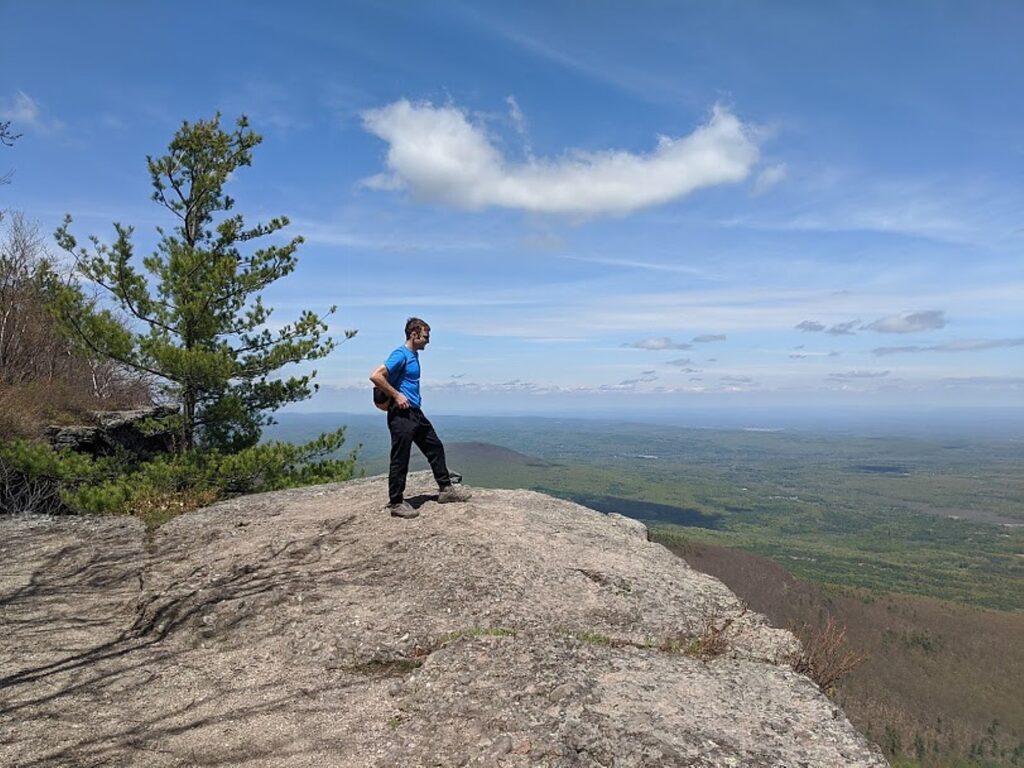
9. 2021: The Year of the Travel Reset
The year when all travel may become wellness travel
By Elaine Glusac, columnist, New York Times
The coronavirus pandemic acted as a near-complete brake on travel in 2020. The pause gave everyone—consumers and suppliers—the opportunity to think about rebooting travel for the better by correcting overtourism, becoming more conscious of where the money goes, and how to use the enormous power of tourism to sustain cultures and environments and perhaps even leave them better off.
Looking ahead, the year 2021 may be the year that all travel becomes wellness travel. As home and work lives merged during the pandemic, work grew for many, prompting employers to emphasize self-care, beginning with vacations. Additionally, health assessments—including pre-arrival COVID-19 tests—are becoming vital precursors to travel. And vaccine passports are in development.
From the manic travel of 2019—which was the ninth year of record-setting growth in travel, outpacing global economic expansion—2021 will be the year of the travel reset, going slower, nearer and more mindfully. Fitfully too, mirroring the vaccination rollout, which has prompted optimism as well as tentativeness.
Some ways travel will be reset in 2021:
Making travel regenerative: or leaving a place better off than you found it. An example includes the Svart lodge in Norway, which plans to be energy positive, producing more solar power than it needs.
Challenging overtourism: finding ways to ensure that when travel rebounds, it doesn’t threaten to overrun attractions and communities.
Correcting undertourism: being mindful of the positive force travel can be by sustaining communities and ecosystems in encouraging conservation and local investment.
Tentative travel: taking cautious steps in travel to local and regional destinations before national and international ones as confidence in the health and safety of travel grows.
Embracing nature: discovering the healing power of nature, a movement unleashed during the pandemic, will continue as travelers continue to value isolation, slow travel and human-powered travel.
Putting purpose first: making travel more meaningful or purposeful, from planning family reunions to pursuing personal challenges like climbing Mt. Kilimanjaro.
Eventually, the widespread distribution of vaccines is expected to unleash a flood of travel, though the date the dam breaks is hard to foresee. For now, 2021 will be a year of resetting travel as a closer, slower, more careful, healthier pursuit as we emerge post-vaccine.
The full 97-page Global Wellness Summit Trends Report can be purchased here.
The Global Wellness Summit is an invitation-only international gathering that brings together leaders and visionaries to positively shape the future of the $4.5 trillion global wellness economy. Held in a different location each year, Summits have taken place in the US, Switzerland, Turkey, Bali, India, Morocco, Mexico, Austria, Italy and Singapore. The 14th annual Summit took place at The Breakers Palm Beach, FL, from November 8–11, 2020. The 2021 GWS will be held in Tel Aviv, Israel, in November 2021.
See also:
Pandemic Underscores Urgency for True Universal Healthcare with Added Emphasis on Wellness


